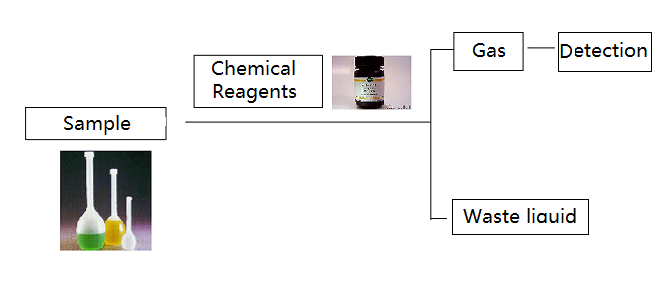Gas-Phase Molecular Absorption Spectrometry (abbr.GPMAS) is theoretically based on Lambert-Beer's Law, which describes that within a specific range, the density of a tested gas is in linear relation with its light-absorbency. The tested substance is transformed into gaseous state through specific chemical reaction, and then the substance’s content can be figured out through quantitatively analyzing the gas.


For example, the sulfide in tested samples can be transformed into H2S to determine the sulfide’s content in the samples, for the similar purposes, nitrite can be transformed into NO2, nitride can be transformed into NO, and mercury can be gasified as mercury vapor, and so on.
In addition, the GPMAS can be used to directly measure the content of a specific gas in the sample, for instance, measure NO2, SO2 and H2S in air. In this way, under specific pressure, the tested sample is directly put into a measuring system to determine its light-absorbency, and then compare the results with the light-absorbency of specific standard solution or standard gas with known density of the measured gas.
The GPMAS is recognized by China Ministry of Environmental Protection in many fields, such as the six ways respectively used to measure nitrite nitrogen, nitrate nitrogen, ammoniacal nitrogen, Kjeldahl nitrogen, nitride and sulfide, and were included in the fourth edition of Methods for Monitoring and Analysis of Water and Sewage Water, a guideline book issued by the ministry years ago. These six ways also passed the method validation and expert approval organized by the ministry on Nov 15th, 2005, therefore adopting these ways for analysis in professional labs conforms to the conditions of method origin required by ISO17025.




